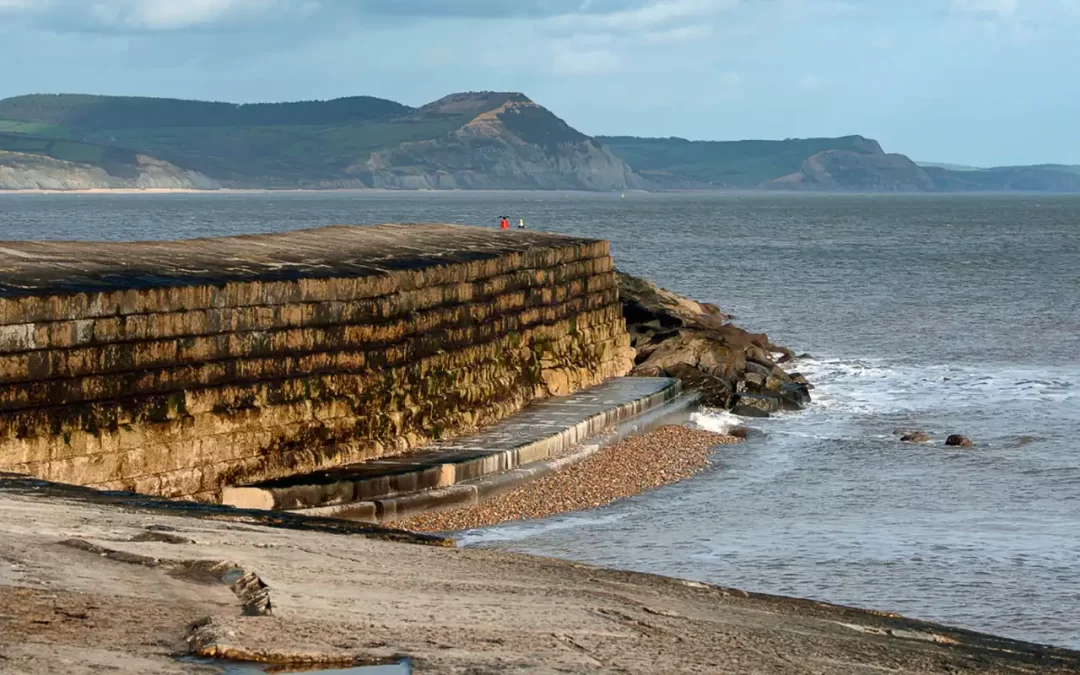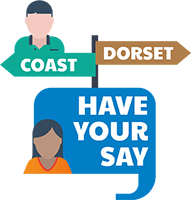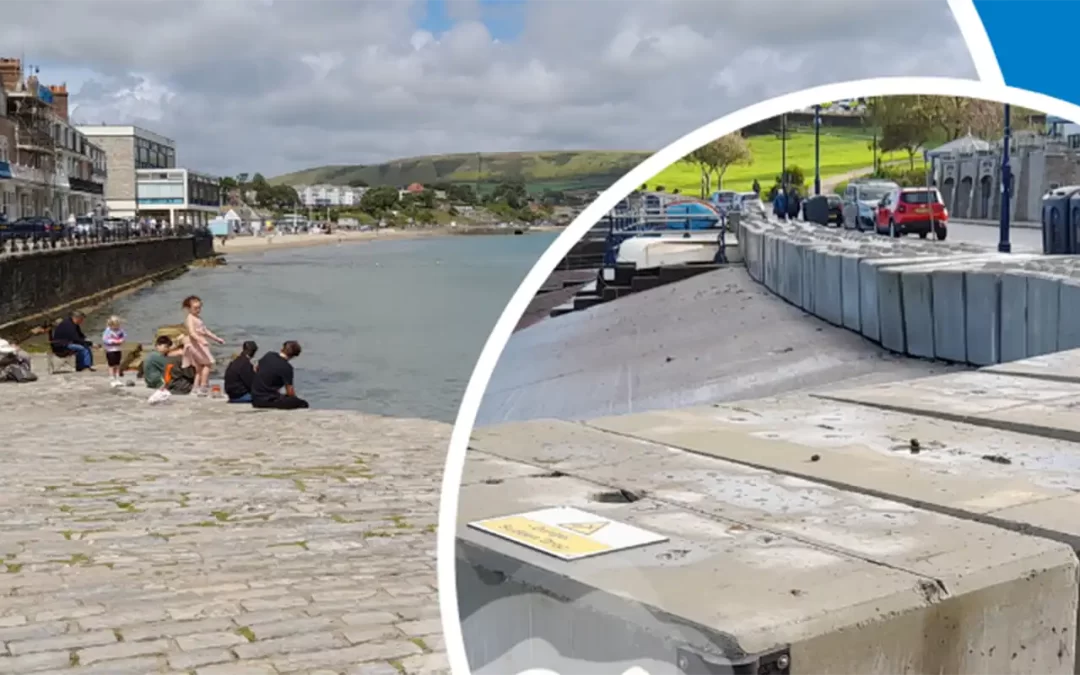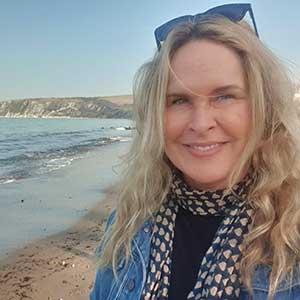No Results Found
The page you requested could not be found. Try refining your search, or use the navigation above to locate the post.

The page you requested could not be found. Try refining your search, or use the navigation above to locate the post.
Sea-floor erosion, combined with the localised movement of stone blocks due to wave impact on the outer harbour wall and the deterioration of the structure on the inner harbour wall, have seen significant destabilisation of the structure.
It is predicted that the functionality of the Cobb as a breakwater would end in the 2040’s, potentially resulting in the loss of the harbour, and over 100 residential and non-residential properties will be at increased risk of flooding and coastal erosion.
The project aims to stabilise the Cobb to maintain its status as a breakwater, a coastal flood and erosion defence and a safe harbour for many different types of vessels and businesses.
It is being proposed to strengthen and stabilise the structure which may include construction of a low-level concrete toe foundation strengthening wall along with tension piles to anchor the inner harbour walls.
Design options have been extensively reviewed by the project team and the wider statutory authorities including Historic England, Marine Management Organisation, and the Environment Agency. The project team are currently reviewing the scheme design options with a view to come to a preferred option that can be presented to stakeholders and the public. The preferred design will have a material effect upon construction timeline and therefore the project team is not in position to comment upon the construction programme at this time.
#CoastalInnovation #CoastalConnection



The page you requested could not be found. Try refining your search, or use the navigation above to locate the post.
In storm events or high tide and easterly winds, the town centre’s current defences suffer from waves overtopping the sea wall. This is an ongoing issue and has diverse implications for Swanage, impacting the environment, businesses, and tourism. The impacts of these events on Swanage have demonstrated the need for improved protection.
Dorset Council in partnership with the Environment Agency, Dorset Coast Forum and Swanage Town Council are looking at options for coastal flood defences to help protect the town of Swanage.
The scheme aims to provide a permanent flood defence scheme to Shore Road and the Mowlem Slipway area, The Square, The Parade and Lower High Street. This central location currently relies on seasonal emergency temporary flood defences which are deployed each winter by the Environment Agency to help protect the town from high tides and storms.
Dorset Council’s Flood & Coastal Erosion Risk Management Team (FCERM), supported by JBA Consultants are leading the progression of a single scheme and an outline business case which will be submitted to the Environment Agency to bid for government funding for the scheme.
If funding is obtained, there will be further consultation with community and specific groups as the project develops. Design proposals for the flood protection scheme will be shared through direct contact, structured workshops and open community consultation events led and facilitated by Dorset Coast Forum on behalf of the project.
#CoastalInnovation #CoastalConnection

Project Officer, Dorset Coast Forum
sara.parker@dorsetcouncil.gov.uk
01305 224728 / 07780 148790


Click icon to view video of University of Southampton research and monitoring divers observing seagrass regrowth in the voluntary no anchor zone.
Recreational boaters who use, visit and enjoy Studland Bay are being asked to help protect its precious habitats for the future.
After extensive consultation with the boating community and users of the bay, a Voluntary No Anchor Zone was introduced by the Marine Management Organisation in 2021 to help reduce damage caused by boats dropping and weighing anchors and extended in June 2022 (see the MMO’s Studland Bay MCZ Habitat Protection Strategy and website for more information). At all times, anchoring in emergency situations is still permitted.
Representing a wide range of organisations, the Studland Bay Marine Partnership formed to work towards protecting Studland’s seagrass beds and its resident, and protected, long-snouted seahorse population and other marine wildlife.
Hundreds of waterborne visitors to Studland Bay already take a proactive approach to conservation by using eco-moorings. The SBMP has brought together key stakeholders and introduced a mooring solution that meets the needs of recreational boaters and protects the precious seagrass habitat.
For the 2024 summer season, 87 eco-moorings installed by the Studland Bay Marine Partnership will be available for boaters who are visiting the bay to use. These provide a fantastic solution allowing boaters to moor without dropping their anchors on the seagrass. Each eco-mooring has a helical screw anchor which is driven into the seabed and attached to the mooring buoy via an elastic rode which stretches and contracts with the tide, avoiding scouring the seabed.
Visit the HYS website below for more information about the project, including our eco-mooring coordinates, FAQs, how to donate to moor, or just donate and lots of supporting information about the Studland Bay Marine Partnership.
#CoastalRecovery #CoastalConnection #RespectTheCoast

Project Officer, Dorset Coast Forum
sara.parker@dorsetcouncil.gov.uk
01305 224728 / 07780 148790


The page you requested could not be found. Try refining your search, or use the navigation above to locate the post.
As a low-lying coastal town, Weymouth is at risk of coastal flooding and erosion from the sea and flooding from surface water and the river. If a severe weather event takes place in Weymouth, thousands of homes and businesses could be flooded.
In accordance with climate change predictions (UKCP18), sea levels are rising, and extreme weather events will happen more often and may be more severe. It is predicted that in 100 years, the average sea level can be more than one metre higher than it is today. This means that all high tides and low tides will be one meter higher, too.
As part of the Weymouth Harbour and Esplanade Flood and Coastal Erosion Risk Management (FCERM) Scheme, Dorset Council is working with Dorset Coast Forum, the Environment Agency, Wessex Water, BCP Council and WSP (engineering consultants), to develop an Outline Business Case (OBC).
An OBC is a document required by the UK Government Treasury when government funds are requested. The OBC will investigate costs and benefits of a range of options, then recommend the preferred options to improve Weymouth’s resilience to coastal flood and erosion risks.
This OBC project will build on earlier work carried out by Dorset Council and the Environment Agency exploring possible options for managing coastal flood and erosion risk in Weymouth. The earlier work recommended a phased approach to improve resilience in three stages:
The OBC being produced will apply for funding for the first phase of work to take the project up to 2042. It will prioritise sections of harbour walls that are currently lower, or close to the end of their design life, and sections identified along the esplanade which are at the most risk of erosion.
Managing impacts associated with any proposed improvements is a key consideration. These include minimising disruption as far as practicable to businesses, harbour operations, residents, and the community of Weymouth, and managing impacts on fisheries and the environment. As part of the project, we will also be delivering exciting new regeneration opportunities for Weymouth.
#CoastalInnovation #CoastalConnection



The page you requested could not be found. Try refining your search, or use the navigation above to locate the post.
Swanage has a combined series of distinct coastal management schemes underway, led by Dorset Council’s Flood and Coastal Erosion Risk Management (FCERM) team and you can follow project updates on these pages.
Coastlines need to be managed to prevent natural processes, such as erosion and flooding, destroying vulnerable areas of the coast. Often the coastline is used by people for homes, agriculture, industry, tourism or other businesses. In addition, there are many coastal areas which are sites of natural beauty or are od special scientific interest. A failure to prevent erosion and flooding can lead to a loss of life or property.
With climate change leading to rising sea levels and more extreme weather, the coastline may become increasingly vulnerable.
There are different options available for managing coastlines:
Swanage Beach Management Plan (BMP) is a plan for managing a beach at a local level for the purpose of Flood and Coastal Erosion Risk Management (FCERM), to maintain or improve the conditions of the beach as both a means of coastal protection and as a recreational resource.
#CoastalInnovation #CoastalConnection

Project Officer, Dorset Coast Forum
sara.parker@dorsetcouncil.gov.uk
01305 224728 / 07780 148790
